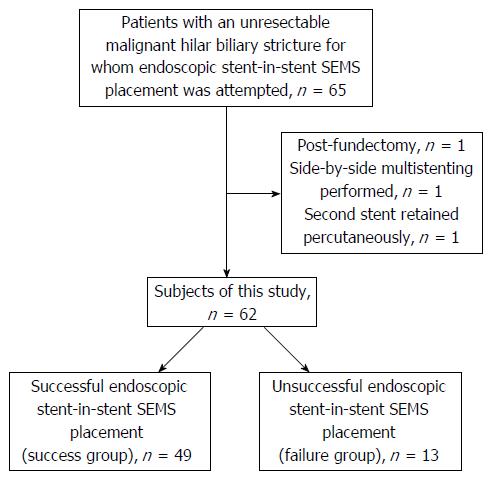Copyright
©The Author(s) 2017.
World J Gastroenterol. Sep 14, 2017; 23(34): 6273-6280
Published online Sep 14, 2017. doi: 10.3748/wjg.v23.i34.6273
Published online Sep 14, 2017. doi: 10.3748/wjg.v23.i34.6273
Figure 1 Targets of this study.
Among 65 patients with an unresectable malignant hilar biliary obstruction, 62 patients were included. These 62 patients were divided into two groups, the success group, in whom an endoscopic stent-in-stent self-expandable metallic stent (SEMS) placement was successful, and the failure group, in whom an endoscopic stent-in-stent SEMS placement was unsuccessful.
- Citation: Sugimoto M, Takagi T, Suzuki R, Konno N, Asama H, Watanabe K, Nakamura J, Kikuchi H, Waragai Y, Takasumi M, Sato Y, Hikichi T, Ohira H. Predictive factors for the failure of endoscopic stent-in-stent self-expandable metallic stent placement to treat malignant hilar biliary obstruction. World J Gastroenterol 2017; 23(34): 6273-6280
- URL: https://www.wjgnet.com/1007-9327/full/v23/i34/6273.htm
- DOI: https://dx.doi.org/10.3748/wjg.v23.i34.6273









